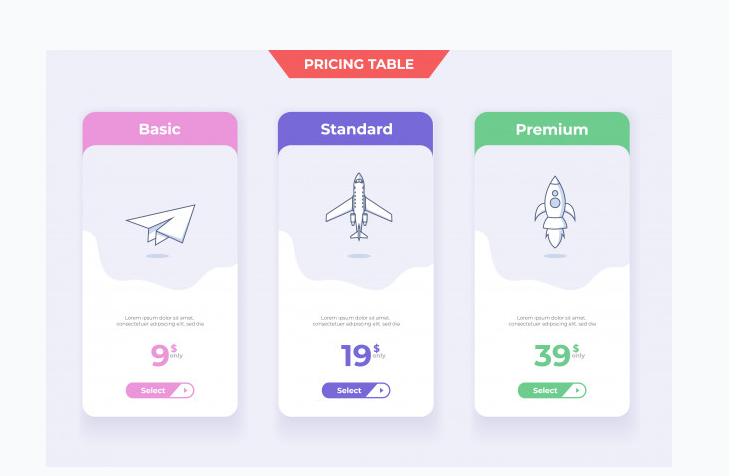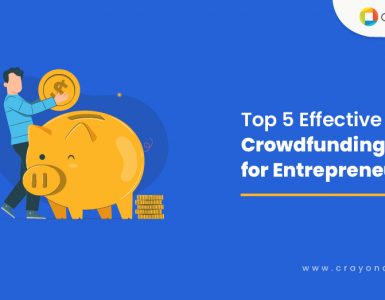Selecting a price for your product can be tough.
It is like shooting in the dark. That is exactly why you need to spend a lot of time.
Pricing plays a huge role in selling your product. The cost of your product should be justifiable for your users. That said, most startups do not spend more than 6 hours on devising a pricing strategy for their product. It is not something that you set up a meeting and get done with.
Your SaaS pricing strategy should help you find the right balance between value and revenue. The cost of your product fairly determines the future of your business therefore you need to spend more than just 6 hours.
If you undercharge your product, you will end up paying for the resources from your pocket. If you overcharge them, then chances are your customers will choose your competitors over you.
In this blog, we are going to cover the different SaaS pricing strategies that will help your business.
SaaS Pricing Strategy
Pricing is the heart of your business. This is because all your other departments such as marketing, sales, development depend on how you position and price your product.
If you read great blogs on pricing, people would advise you to go with your gut. Some would say, multiply the number that your gut says into three. Well, you need a pricing strategy that is thought through and not something that is based on your gastrointestinal feeling.
Let us look into a few of the strategies:
Penetration
Penetration pricing is a type of predator pricing strategy. It starts off by assigning a really low price to the product and once the product gains friction in the market, they increase the price. This is a great strategy if you are a startup. By pricing your product low, you allow more prospects to try your product.
Advantages:
- Helps in increasing sales
- Increases brand loyalty
- Helps in keeping competition away
Captive pricing
Captive pricing is the process of attracting customers by offering the core product at a low cost but, the complimenting products that are need to work with it are priced higher. For instance, let us say you are pricing your SaaS product at $15 Per month, and your product requires an add-on to work with it. Here, if you price your add-on to adjust the price of your product, then it is called captive pricing.
Advantages:
- Attracts customers because the cost of the product is low.
- In case of recurring billing, the MRR (monthly recurring revenue) is high.
- Increases opportunities for cross selling.
Skimming pricing
Skimming pricing is when the product is priced really high during the launch, and then the price is reduced over time. This is a best suited pricing strategy if you have a new product idea that is not available in the market. For example, let us assume that there are no CRM tools available in the market. And, your product idea is a CRM software. This would work great. The price is reduced as more competitors enter the market.
Advantages:
- Provides revenue for product development.
- As you are the thought leader, word of mouth marketing is high.
Prestige Pricing
Prestige is a premium pricing model. The product is priced really high because of the brand value that is attached to it. Premium pricing is all about brand value. When it comes to SaaS pricing strategy, prestige pricing is not predominant. For example, Apple is considered a prestige product. Even though there are phones, and laptops with pretty much the same configuration available at a better price, people still choose Apple over the others because of the brand value that it has. When it comes to SaaS, a lot of businesses prefer using Gmail for Business, rather than other email providers.
Advantages:
- As your brand already has a reputation, the pricing can be fluxed to justify your brand value.
- People prefer the product to its alternatives primarily because of the brand recognition.
Pricing models
Flat price
Flat pricing model is having a fixed price for your product. It is the simplest way to sell your product that has a set of features.

Source – bloom
Examples of Flat pricing.
- Basecamp

- HubSpot

Unit Based pricing:
Per Unit:
Here the product charges the customer based on the number of units they purchase. Each unit is priced the same amount. This plan is suitable if your subscription model involves quantity. A unit is 1 quantity of what you are selling to your customers. For instance, let us say 1 unit of your product costs $10, if the user buys 5 units then the charge would be $50.
Examples of per unit pricing:
- Appfolio

- Slack

Active user:
Here the charge of the product is based on the number of active users. Your customers pay only for the number of active users during the billing duration. This is great for billing companies who have a lot of users, but the company itself isn’t sure about the number of people who will use your product.
In active user pricing, the SaaS product should allow any number of users to sign up. But, when it comes to billing, the number of users who have were active during the billing duration will only be billed.
Examples of Active user Pricing:
- Eschedule

Tiered pricing
Tiered pricing is like unit pricing but has tiers associated with it. The tiers are set based on the quantity. It is an effective pricing model if you are selling lisences based on the number of users within a particular price range.
As a tier fills up you will be moved to the next and billed accordingly.
Let us look into this example:
0-5 units of the product are priced $10 per unit
6-10 units of the product are priced $12 per unit
11 – 20 units of the product are priced $15 per unit
If a customer purchases 11 units then the cost would be [5*10]+[5*12]+[1*15]=[50]+[60]+[15]=125
The first 5 units is priced at $10 per unit = 5 * 10 = 50
The next 5 units is priced at $12 per unit = 5 * 12 = 60
The last 1 unit is priced at $15 per unit = 1 * 15 = 15
The total value is $125.
Examples of tiered pricing:
- Freshdesk

Stairstep Pricing
Stairstep pricing model is a combination of flat fee and tiered pricing model. Here the product is grouped into slabs and the customer is charged based on the slab that they purchase from.
Let us loook into an example:
Slab 1: 0-5 units of the product are priced $10
Slab 2: 6-10 units of the product are priced $12
Slab 3: 11 – 15 units of the product are priced $15
Slab 4: 16 units or above is priced $20
Now the user will be charged the same $10 irrespective of whether 1 unit or 5 units. If the user chooses to purchase 20 units then the cost would be $20. If another user chooses to purchase 100 units, the cost would still be $20.
Feature based pricing
Feature based pricing is the concept of adding value as a metric. Not all your users would require the same set of features. Unlike the other set of models described in the blog, this requires a deeper understanding of your audience. When it comes to feature based buying, you need to have a strong characterization of the buyer personna. Because, here you are projecting the same SaaS product that you have to different types of users, based on the subset of features that will drive value to them.
While this is one aspect, another is to offer the same feature list to organizations based on their size – small, medium and enterprise. Using feature based pricing offers a strong motivation to upgrade.
You need to understand which features of your product each segment would need so that you can group them accordingly. High end features are generally placed in the higher plan.
Here is an example from Evernote:

Freemium
Freemium models are a great SaaS pricing strategy to get users try your product. When it comes to any business, users do not like paying money upfront. But, if they don’t want to pay and you don’t offer a free plan, how do they try your product. One might say trials, but when you offer a trial you are restricting the user to take a decision within a particular time frame, which creates a sense of urgency. This might work for some organizations, but for companies that have a strict budget, this might not work. With a freemium plan, you are bringing the user to your system. They are provided with basic features necessary to evaluate or sometimes even enough to run their business. As their company scales up, they can choose to purchase a higher valued plan that fits their business. Companies like HubSpot, Zoho, Drift were one of the few companies to crack this marketing strategy. Most of these companies promise a forever free plan.


Bottom line
How you charge your customers is the bigger question that you need to figure out when it comes to defining your SaaS pricing strategy. The next question is, how much you charge your customers. Most businesses today get fixated on the second question that they leave out the former. The different pricing models listed in this blog gives you an overview of how you can go ahead and charge your customers. When it comes to subscription billing, each business is different, there is no one model that fits all.
That said, it is alright to not get your pricing right in the first go. Upscope co-browsing doubled revenue by doing per unit pricing after a lot of experiments, Drift introduced a freemium plan so that they only charge customers who use their product intensively. It is okay to make mistakes, to experiment, but what is important is that you do learned mistakes, rather than fixing the first number that comes to your mind as the price of your product.
Enjoyed the article? Want to read more?
Head over to www.crayond.com







Add comment